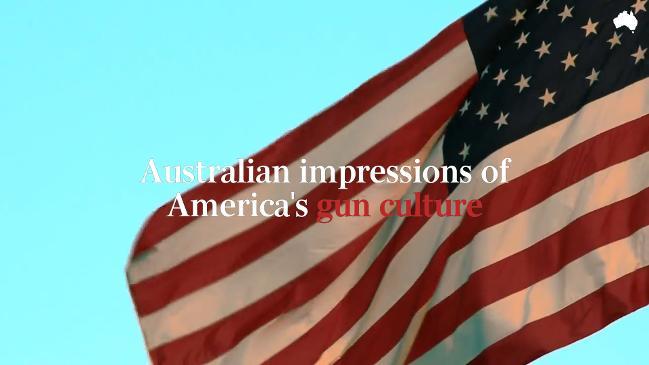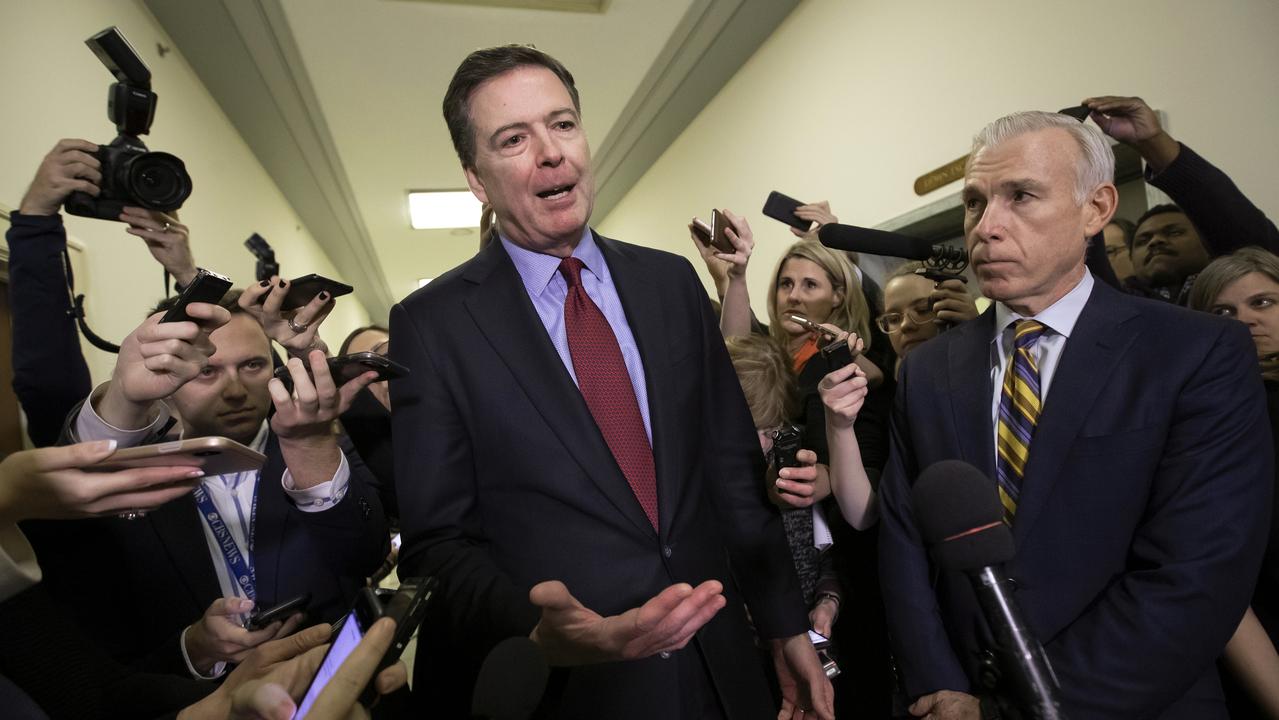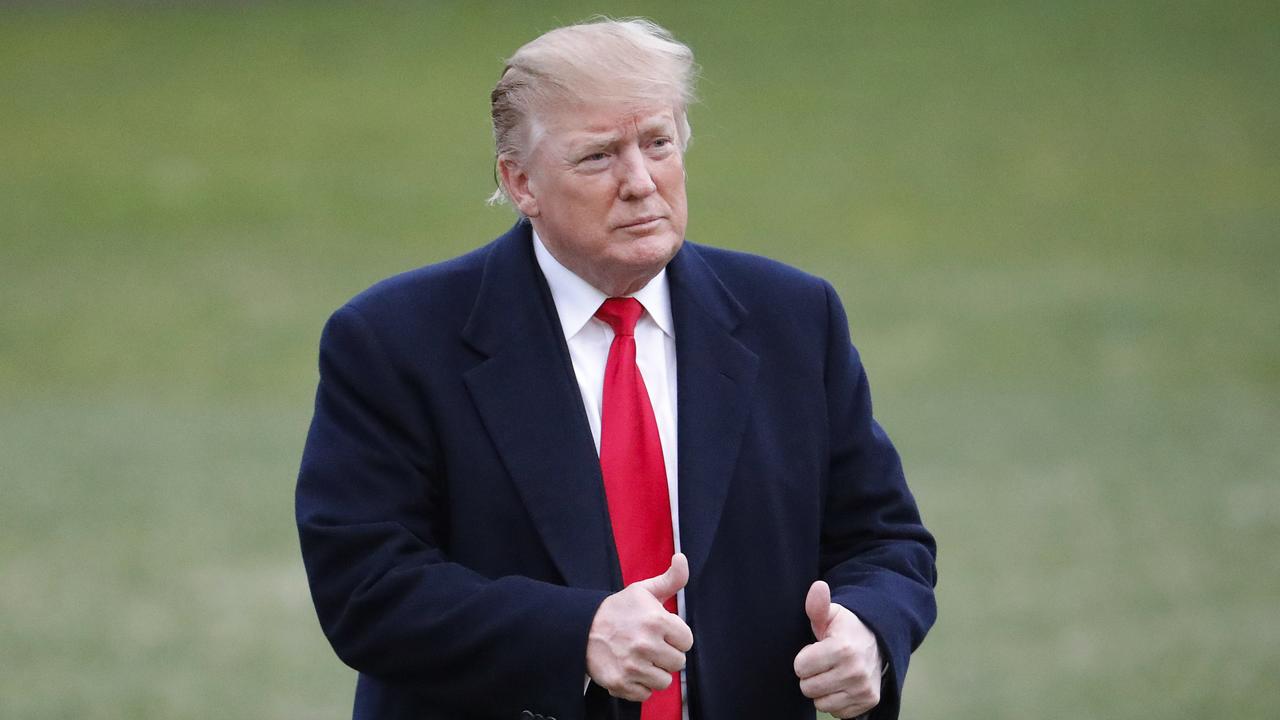
Sitting in a downtown New York bar some years ago with a good friend, a Republican, and a group of other New Yorkers, we chat about America’s gun culture. The women at our table pull out their phones and show me lots of photos of themselves posing with all kinds of guns. A beautiful long-haired blonde is holding a very big semi-automatic weapon that dwarfs her tiny frame. These women are the image of downtown cool or uptown glamour. And they are all Democrats. I remark that the Australian and the Republican are the only ones who haven’t fired a gun. Understanding America is hardest right here, on guns.
Americans and their attachment to guns is downright incomprehensible. The week has been filled with details of the evil inside the room from which Stephen Paddock aimed automatic gunfire at more than 20,000 people enjoying an outdoor concert. Images of the 23 high-powered guns and ammunition in the room were flashed around the world. So, too, were stories of the horror below, people penned in by wire fences, photos of the dead, stories of the heroes and the survivors, candlelit vigils, flags flying at half-mast, people finding solace in faith.
Law enforcement officers are trying to understand why a 64-year-old accountant who shopped at Guns and Guitars and liked to gamble carried out the worst mass shooting in America’s history.
The bigger mystery is the fatal flaw embedded in one of the world’s greatest democracies. It appears to be all down to 27 words in the second amendment to the US constitution: “A well regulated militia, being necessary to the security of a free state, the right of the people to keep and bear arms, shall not be infringed.”
Historians tell us that these words reflected a political compromise between federalists who wanted a strong federal government and anti-federalists who mistrusted central control. After all, everyone from Francis Bacon to Adam Smith to Niccolo Machiavelli has advocated the civic duty of men to join a local militia. From the first settlements in the American colonies, this civic republicanism required every white male to enlist — and bring their own gun.
These 27 words, which emerged from Americans fighting off their British masters and their lingering scepticism of central power, have led to long and tedious historical disagreements as to whether the second amendment provides for gun rights as part of some collective civic duty or an individual’s right to own guns, or both. If only the drafters in 1789 had their own version of Strunk and White, the modern-day bible for editors that teaches plain writing.
But you can’t blame founding-era language for the fact there are more than 300 million guns in America today, twice as many per capita as in 1968. For 200 years the second amendment received very little judicial attention.
There are some who blame America’s lax gun laws on a handful of conservative judges on the landmark second amendment case of District of Columbia v Heller. Here, for the first time, the US Supreme Court, by a 5-4 majority decision in 2008, led by the court’s most famous conservative judge, Antonin Scalia, decided that “there seems no doubt, on the basis of both text and history, that the second amendment conferred an individual the right to keep and bear arms”, striking down a ban on handguns.
Blaming the conservative majority in Heller overlooks the fact this decision didn’t come from nowhere. Heller is best seen as the culmination of a growing conservative jurisprudence that arose in response to judicial social engineering that reached its own high legal watermark in Roe v Wade.
In that 1973 case, the Supreme Court discovered a woman’s right to have an abortion in the vague words of the due process clause of the 14th amendment to the constitution. Instead of leaving it to state legislatures to settle policy and laws on abortion, a majority of Supreme Court judges dreamt up a constitutional right that matched their own social preferences.
Blowback to the galloping judicial adventurism in Roe v Wade extended beyond the culture wars. In the judicial world, the answer to this judicial social engineering became known as originalism, or what Scalia called textualism — in other words, judges should stick to the words of the constitution rather than succumbing to their own political predilections. Originalism, said Scalia, was the way to avoid the “temptations of politics” on the bench.
While some criticise Scalia’s textual interpretation of the second amendment as an individual right to bear arms for skating over a “well regulated militia”, his deference to words on the page is far more credible than the court’s 1973 invention from nothing of a constitutional right to abortion.
It’s part of the great American freedom paradox that those who don’t think the words of the second amendment support an individual right to bear arms are often the most ardent believers that a woman’s right to have an abortion can be easily discerned from the 14th amendment. And vice versa.
Whichever way you dice it, two opposing legal philosophies from the Supreme Court over abortion rights and the right to bear arms fuelled two deeply divisive cultural clashes that continue to rage in American politics.
And on the right to bear arms, originalism still doesn’t explain why almost 12,000 Americans have been killed by guns this year alone. After all, the majority judgment in Heller made clear that “the right secured by the second amendment is not unlimited”. In other words, gun control laws are not precluded by the second amendment.
If historians and judges can’t provide the answer to the continuing gun carnage in America, maybe John Oliver can. Is it too soon for a comedian? It shouldn’t be because Oliver’s 2013 foray into America’s gun culture for The Daily Show gets to the heart of why congress didn’t pass serious gun control laws even after 20 children were shot dead by a man at Sandy Hook Elementary School in Connecticut in 2012.
Interviewing Philip Van Cleave of the Virginia Citizens Defence League, Oliver gives the gun rights advocate a red stop sign, asking him to raise it if he thinks Oliver’s suggestions on gun control infringe on the second amendment. Assault weapons ban? Van Cleave holds up the stop sign. Increased background checks? He raises the stop sign again. A mandatory one-hour waiting period then? asks Oliver. The damn stop sign goes up again. “Gun control doesn’t work,” says Van Cleave. “But what if it does?” asks Oliver, pointing to Australia where, in 1996, a newly elected conservative prime minister introduced sweeping gun control laws after the Port Arthur massacre. Van Cleave mumbles something about Australia being on another planet, “different people, different everything … in the real world, with human beings … gun control isn’t going to work”.
Oliver then interviews John Howard, who explains that Australia hasn’t had a mass shooting in Australia since the 1996 gun control reforms, yet there were 13 in the 18 years leading up to that awful April day the same year when Martin Bryant killed 35 people with a semiautomatic Armalite rifle and a semiautomatic SKS assault weapon.
Barely six weeks into his prime ministership, Howard reacted to the single biggest mass shooting in Australian history by negotiating a ban on automatic and semiautomatic rifles and shotguns and a nationwide system for registration and licensing. It caused huge ructions within the new Coalition government, with Nationals MPs and rural Liberals facing vehement opposition from core constituents. But as Howard told me during a series of television interviews in 2014: “You don’t get given an authority to squander it.”
Oliver also interviews Jim Manley, a longtime aide to Democrat Harry Reid, who complains, quite rightly, that taking a position at odds with the National Rifle Association and its four million members can be political suicide. Oliver asks him: what makes a successful politician? “Getting re-elected by his or her constituents,” says the political aide.
A few years ago, during a trip to Washington, DC, I drove across the border to Maryland. Inside a huge warehouse full of weapons for sale, I handed over $US20 to the man behind the counter, who gave me a plastic container holding 50 rounds of ammunition and a heavy Glock pistol. I had never shot a gun. Unaccompanied, I entered the shooting alleys and fired off just enough rounds to realise that an outsider can never really understand America’s gun culture. Except this. The lack of action on gun control isn’t a constitutional issue. It’s a lack of leadership issue. Friday was day 279 in 2017 and there had been 273 mass shootings. The law of averages means the next one is not far off.




To join the conversation, please log in. Don't have an account? Register
Join the conversation, you are commenting as Logout